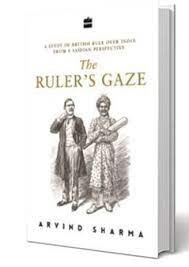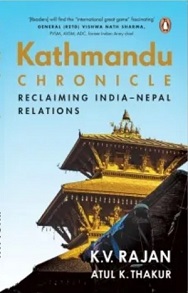Introduction
The seminal work of Edward Said titled Orientalism, which was first published in 1978 established itself as a canonical text of Cultural Studies. It studied the nature of Western insidious attitude towards the East, an approach that was supported by ideological creations of European intellectuals, administrators, philosophers, etc. It critiqued the Western tendency to portray the East as ‘uncivilised’, ‘backward’, ‘unethical’ and various other stereotypes. Because the "Orient" is typically portrayed in these cultural representations as being primitive, violent, irrational, fanatic, despotic, and fundamentally inferior to the westerner, "enlightenment" can only take place when "traditional" and "reactionary" values are replaced with "modern" and "progressive" western ideas.
Said also mentioned that the remanence of orientalism and its effects are continuing even in the post colonial era. However, the Saidian analysis derives examples in relation to the Middle East and Islam, a society that he is more familiar with. The Ruler’s Gaze is an attempt by one of the world’s distinguished scholars of Comparative Religion, Prof. Arvind Sharma to examine the Saidian thesis of knowledge production in the context of Indian experience of British rule. The author freely admits that his work engages in testing Edward Said's well-known thesis, which he defines as the "contention that the relationship between knowledge and power is central to the way the West depicts the non-West.” Prof. Sharma begins by highlighting how Saidian thesis inverts the Baconoian maxim ‘Knowledge is power’ to ‘Power is Knowledge’ or ‘Power defines Knowledge’. One of the key takeaways from the book is that the Greek views on India were different from that of the British, while the views of Muslims were in tandem with those of the Raj.
The author considers the case of India to analyse Saidian Orientalism is not merely for collecting few Indian examples to support the Saidian thesis, rather according to him, the Indian case study might exemplify Saidian thesis in a better way. Because the Study of Islam and Middle East in Europe (the area which Said highlights) was primarily in a ‘conquering world’, but the Western study of India was primarily during the later stage in a ‘conquered world’, that is when Europe was massively expanding (p.4).
Apart from the Saidian thesis, the book relies on the works of scholars such as Nicholas Dirks, Thomas Metcalf, Mrinalini Sinha et al. He also uses sufficient primary sources, such as James Mill's History of British India, works of Vincent Arthur Smith etc, that tell us about the Western scholarship on India during British rule. The chapters of the book revolve briefly around the following major points that the author constantly examines:-
- The variations in the depiction of India/Indians by the British along with their different phases of power relationship with India.
- The portrayal of India and especially Hindus in relation to the attempts to justify British rule over it (given its anomalous nature).
- Major themes in the British Portrayal of India (especially Hindus).
- The differentiation between ‘us’ and ‘them’ in the discourse generated by the colonial rulers.
- Analysing the difference between the depiction of India by ‘Ancient West’ (read Greeks) and ‘Modern West’ (read British). The author highlights that while the former never ruled India, the latter not only ruled but the ruling was inherently anomalous in nature.
- Finding the similarities in the tendencies of depicting India in similar ways among Muslims and the British (two groups of ‘outsiders’ who ruled India at different periods).
An Indian Reception of the Saidian Thesis
To elaborate on the above mentioned points, the book begins by carefully crafting a discursive history of British rule in India. Arguably, this section is worth reading for any student interested to study the history of modern India. It highlights the important watershed moments between the expansion of British rule over India from 1757-1858. The major moments in this era include:-
1813 - Missionaries allowed to work in the company’s territories
1818 - Marathas were defeated by the Company and gained more power in the region
1835 - The promotion of English as a language of instruction
1857 - India’s first war of Independence (called as ‘mutiny’ in the British language), which eventually led to the direct rule by the crown
Along with explaining the historical contexts of these watershed moments, the author carefully constructs the attitudinal shifts in the knowledge production and portrayal of India by the British. This is done by introducing the nature of works and roles played by several prominent individuals and groups who had played significant roles in the same. The author seamlessly enters into the background of these writers, their social circumstances, which were partly influential in their understanding of India. For instance, James Mill, who published The History of British India in 1818, was a child of Scottish Enlightenment committed to its ‘historicist’ paradigm, which created circumstances for a society to progress or become ‘civilised’ (p.75). This influenced him to look at the ‘Hindu phase’ of India as backward and primitive and portray Hindus as slaves, reducing them to mere animal functions. The author also relates the Western perception in relation to some of the social theories constructed in the West. For instance, the author observes how the influence of Darwin’s evolutionary theory (survival of the fittest) took a racial turn in the above-mentioned ‘historicist’ paradigm in the form of social Darwinism. Though Darwin might not have been a racist by himself, the forceful impact of his theory on social sciences and its impact on power equations cannot be undermined.
The author further examines some of the major subtopics related to the Indian social systems that were relevant for the British in their portrayal of India as barbaric or primitive. These include topics such as Suttee (Sati), Legal Inequality, Thuggee, Slavery, Caste, Dowry, Caste System, Female Infanticide, Indian Illiteracy, Aryan Invasion Theory etc (p.99-133). The author also examines how British rule contributed to many of these problems and how some cases were exaggerated or manipulated at specific stages to allege ‘native misrule’ to justify annexation. Some of the topics mentioned above still appear to be discussed in a charged environment despite political or ideological differences. Because our preset notions about these topics possess heavy orientalist baggage, to discuss and research many of these topics in a calm environment, even among Indians, especially in academia, is next to impossible. This inability that we suffer even today shows how strong these narratives of ‘native misrule’ were perpetuated through the themes mentioned earlier. Arguably, efforts to perpetuate the ‘native misrule’ narrative continue to exist in the world in different forms where organisations and NGOs that are mainly US-based or Eurocentric undertake ranking democracies. The self-positioning of the US as the watchdog of democracies and the world's human rights initiatives could be seen from this angle. Though the West doesn't appear to be a ‘ruler’ of the world anymore in terms of hard power, however, the soft ‘power’, which the West has left to the globe in terms of language, education, political and economic models certainly influences the ‘knowledge’ it still produces about the ‘other’ cultures or nations.
The book also maps the much controversial Aryan Invasion Theory (AIT) as a feature of orientalism where the dependency on the distinction between ‘us’ and ‘them’ is fundamental. The author highlights the development of the theory and its debate in relation to the Sadian thesis. The book also mentions some of the early Indian responses to this question of the Aryan invasion (p.135). The author cleverly identifies Dr. B.R Ambedkar as someone to have prophetically challenged the Aryan Theory at its early stage. We know that the Aryan Theory is intertwined with the classification of the ‘Sudras’ in colonial literature and the modern academic scholarship. In that context, it comes as a realisation to notice that while Ambedkar’s ideas are heavily cited to discuss the status of Sudras, his take on Aryan Theory is highly ignored. (Similarly, his opinion on Mapilla Rebellion is also much undermined even by his staunch followers). However, it might appear ironic to see Dr. Ambedkar, whose thoughts on India and Hinduism heavily suffered from the orientalist information being used in this book to challenge one of the orientalist narratives itself.
In the third part of the book, the author enters into a comparative analysis of the British, Greek and Islamic accounts of India. He notes that while the modern Europeans claim themselves as descendants of ancient Greek in terms of their genealogy of ideas, contrastingly, the Greek and British understanding of India constitute a sturdy disparity. The contrast includes subjects pertaining to poverty, sati, philosophy, egalitarianism, caste, slavery etc. The author seems emphatic that this contrast is because the Greeks never ruled India while the British did.
However, it could be said that reducing the entire subject to rulership might be equally problematic. The civilisational perspective and worldview of ancient polytheistic Greek is in contrast to the enlightened secular West which derives its axiom and worldview from monotheism. Though it claims to derive its legacy from ancient Greek, the amount of appropriation, and intellectual violence placed on Greek thought by modernity is a subject of study. This is to say, the modern West not only placed orientalist lenses against the East, but also towards their own past traditions to invent the ‘modern’ [see for instance, Modernity and Plato, Arbogast Schimitt and Vishwa Adluri (trans.), 2012].
In the same way, the author suggests the similarities between Islamic and British accounts of Hindus as both of these cultures held some power in India. Both parties constantly attempted to denounce Hindus and firmly claimed that they had a civilising mission in India. The author's emphasis on ‘power’ or ‘rule’ as a precondition for the given relationship to knowledge is derived from the engine of Saidian thesis. In the words of the author, “..if both Muslims and the British ruled over Hindus, then their knowledge of the Hindus, as depicted in their description of the Hindus, would also follow parallel and comparable courses” (emphasis added p. 267). Certainly, power could be an important factor that fosters orientalism. However, the factors that lie in the ruler’s own cultural and religious elements, moods and motivations, and world views that are responsible for their greed for power cannot be undermined. The conceptual continuity in which Hinduism is understood by both the mediaeval and modern Islamic and European cultures (regardless of their pity or hostility towards the Indian culture) cannot be entirely described from the angle of ‘being in power’. This is to say, we cannot presume that the modern West (unlike the ancient West i.e., Greek) and Islamic culture would have had a different view of Indians or a different view of Hindus if they had not ruled India. Their similarities in understanding Hinduism are carried by the theological motivations that subtly reside in the modern West (through early Christian axioms) and explicitly in the Islamic accounts. In simple terms, the mutual thread of theology between British and Islamic accounts would perhaps be more concrete than the mutual thread of the fact that they have ruled India. The author himself is aware that both differentiated the Hindus from pre-Islamic Arabs and pre-Christian Romans in their works and notions, whom Christianity and Islam succeeded in converting to their respective religions. (p 275).
More interestingly, in the concluding session, the author discusses some limitations and extensions of Saidian Orientalism. One of the lines the author thinks could be extended is, “what the Orientalist has to say about the target culture or religion may tell us more about the Orientalist’s culture or religion than about the target culture”(p. 321). This way, the author carefully dismisses the possible critique mentioned above that his work could have faced. It is noteworthy that while engaging and limiting himself to Saidian thesis the author gives primary emphasis on the aspect of ‘power’. However, in the concluding section as he discusses the limitations and extensions for Saidian thesis he transcends the aspect of power and emphasis more on the culture or religion of the orientalist.
Another important extension of Saidian thesis that he suggests, which would be relevant for a diverse country like India is that “on account of the global domination of the West over the rest, multicultural or multi religious societies may end up with mutually superimposed orientalism” (p. 329). This point subtly undermines the hyper reactions to Western Orientalism that only the ‘insiders’ can study as a culture. But the times we live in are more complex that to make a strict identification of ‘insider’ and ‘outsider’ is nearly impossible, and moreover, the baggage of orientalism and colonial consciousness is such that even an ‘insider’ might arise with the colonial way of understanding their own tradition unknowingly. With such relevant points explaining the limitations and scope for extending the Saidian thesis, the author sets the stage for Reconceptualising India Studies. A task that cannot be limited to India for the context of India emerging as a significant global player. Rather, it appears as a task for the global intelligentsia of both East and West to unlearn the ‘modern’ prejudices on ‘traditions’.











Post new comment